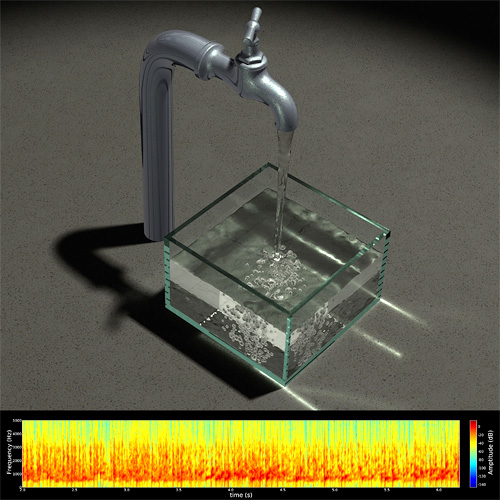
By Andrew Liszewski
While I haven’t seen a perfect CG human just yet, I’m confident that it’s only a matter of time before Hollywood’s A-list are replaced by pixels. However, while we’re able to produce realistic computer generated images and animations, the same can’t be said for sounds just yet, but we’re now one step closer. Doug James and Changxi Zheng, researchers at Cornell University, have developed a way to simulate the sounds of flowing or dripping water, which in real life are produced by tiny air bubbles that compress and expand due to surface tension, creating sound waves in the water.
Now when it comes to movies and TV, the sounds of something crashing into the ocean or a babbling brook can be added by foley artists during post-production, but that’s not an option when it comes to video games or interactive simulations. So by using the geometry of a 3D scene, the Harmonic Fluids algorithm they developed can calculate where the air bubbles would have been created in real life and how they would have moved, which allows realistic accompanying sounds to be generated.
[ Harmonic Fluids ] VIA [ Slashdot ]










